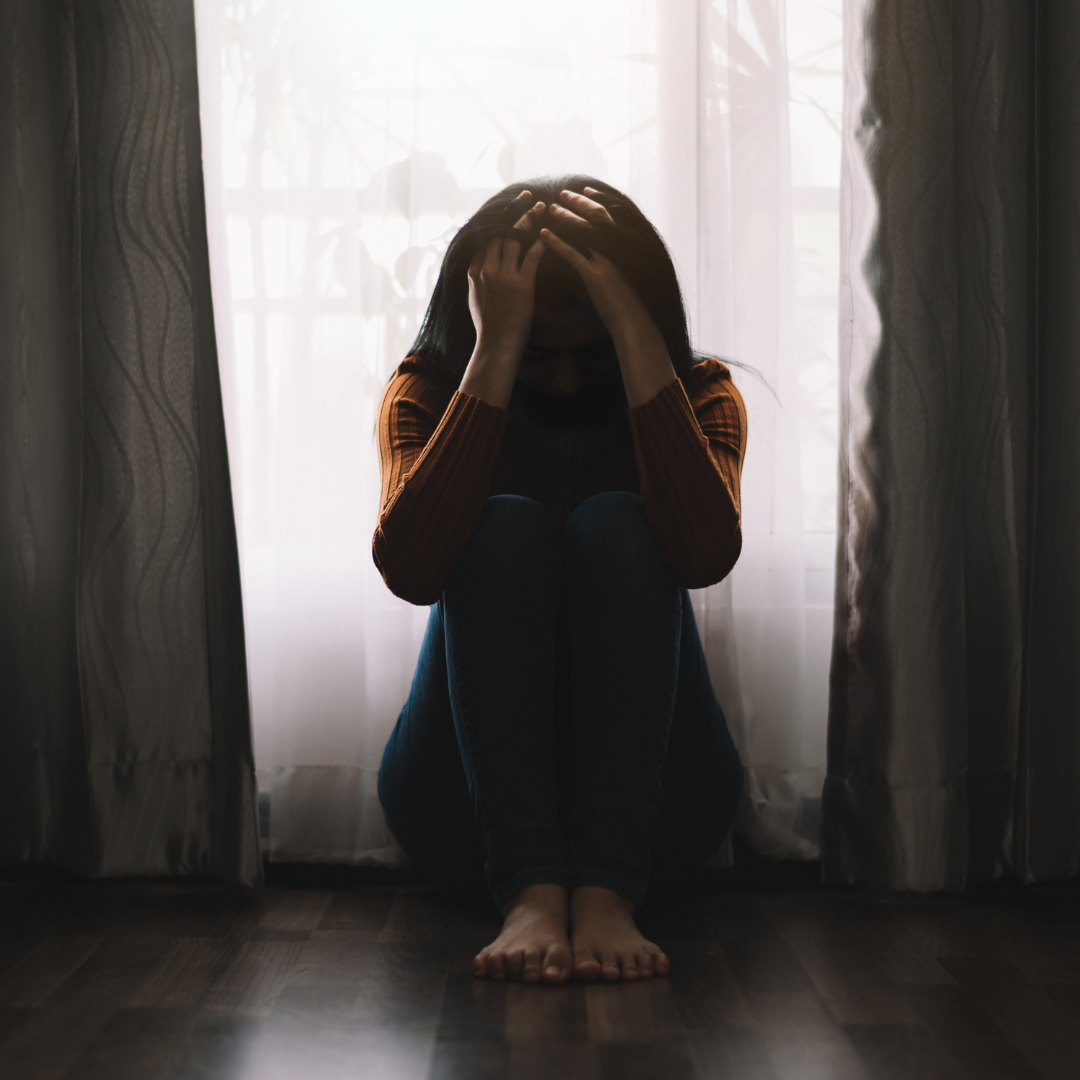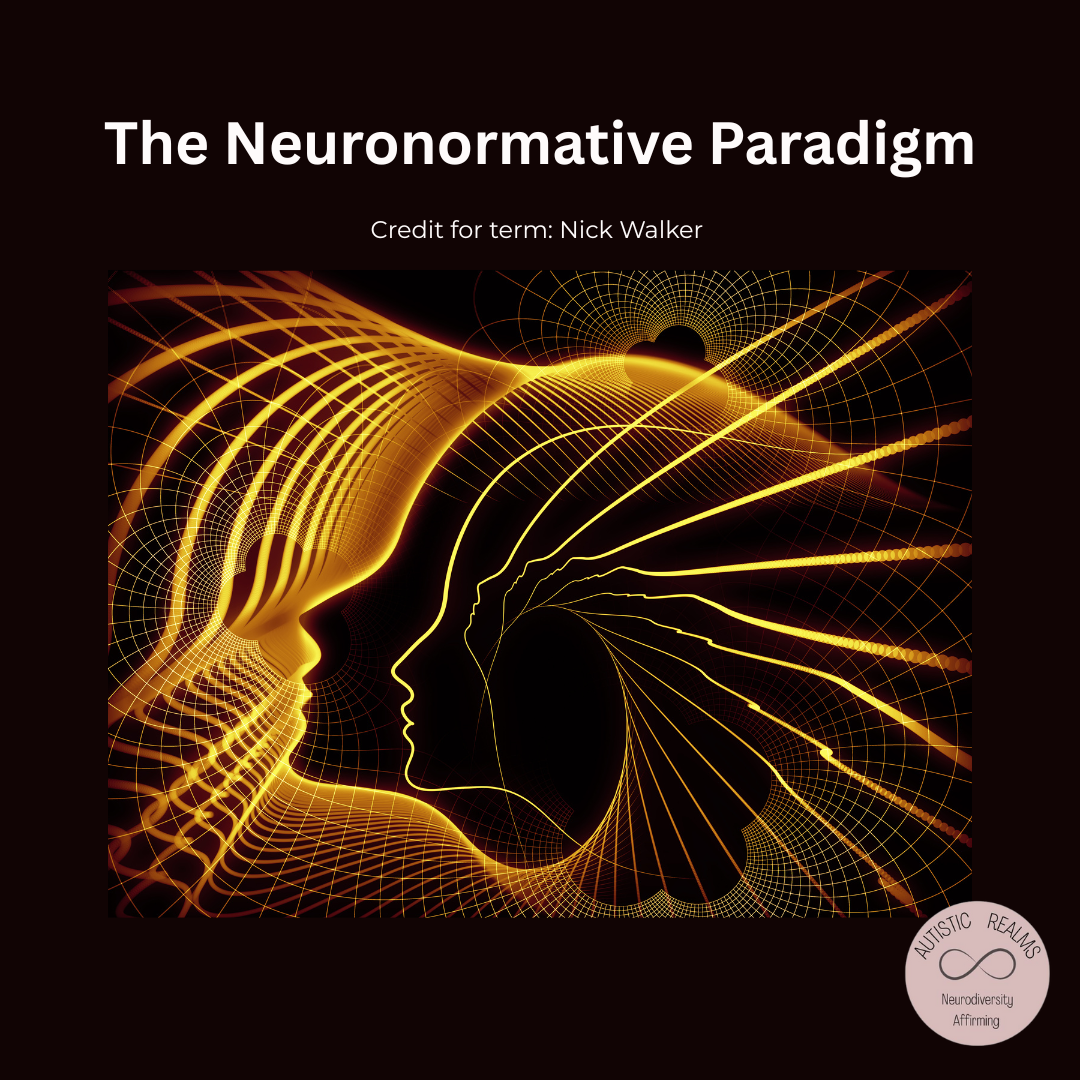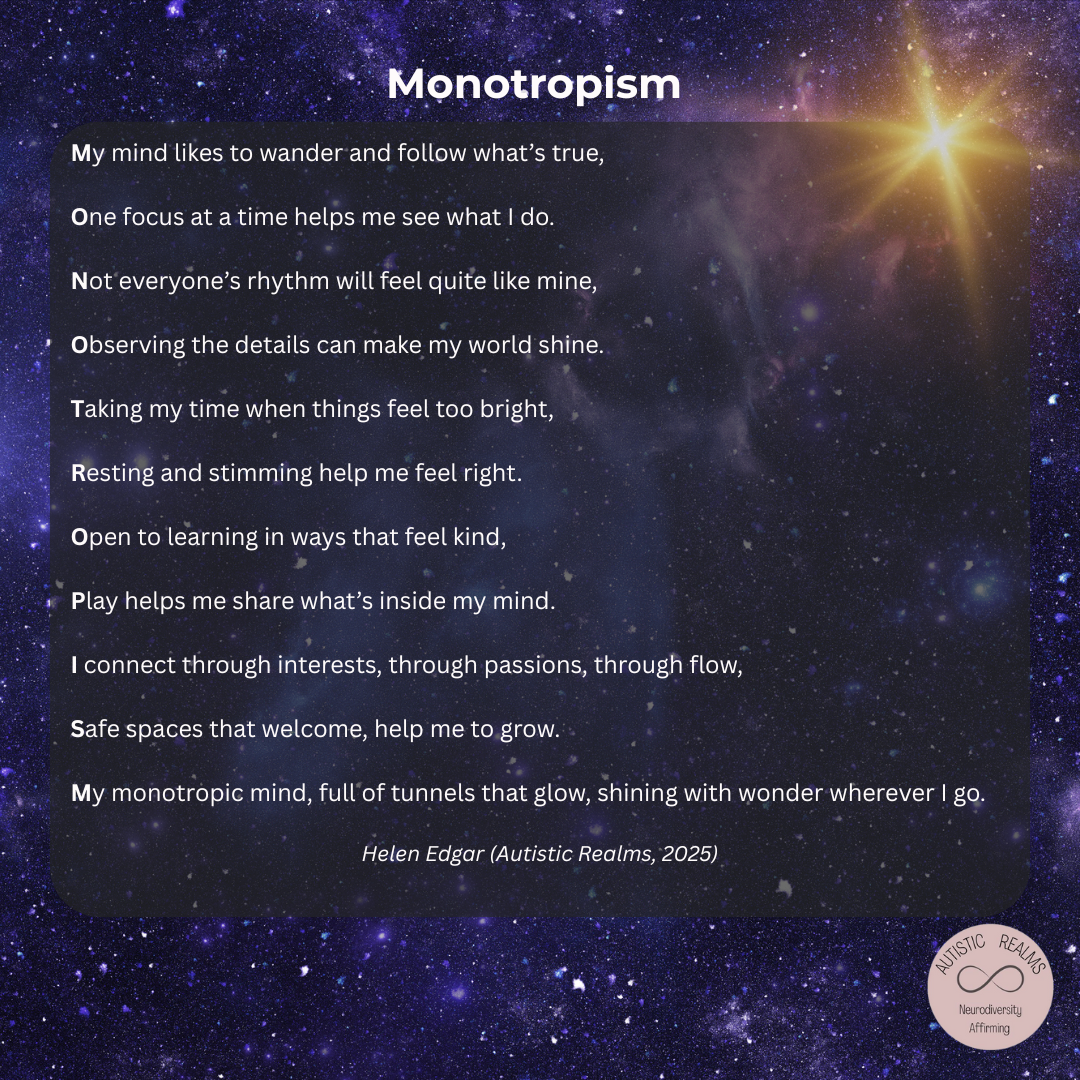Your basket is currently empty!

Neuroqueering in the Liminal Spaces
Neuroqueering in Liminal Spaces
“By silencing our bodyminds, they (neurotypical society) have halted the growth of a chaotic self. We are no longer able to move fluidly through our experience, instead frozen like ice on an arctic tundra” (Gray-Hammond, 2023)
David Gray-Hammond (Emergent Divergence) and I are responding to each other’s blogs to help expand the Autistic Rhizome. We are adding nodules to the webs of discussions happening in the Dark Forests (Boren, 2024) of the online communities and creating an open-source bank of writing to carve a path for community discussion about neuroqueering.
David is continuing his ‘Reclaiming Neurofuturism’ series and has responded to my post The Double Empathy Problem is DEEP. He explored the litigious nature of disabled embodiment and questioned the intentional creation of minority silos via the double empathy divide (Milton, 2012). In support of my own thinking, David also suggests that we need to embrace the healing power of liminal spaces.
I am writing extensively about the in-between, liminal spaces and Ma as a potential chapter for Nick Walker’s new Neuroqueer Anthology (struggling to write it coherently so that it may make sense to others, but it is slowly forming!). Liminality has been a long term passion of mine, tunnelling back over 30 years. As an autistic person, I feel I have lived my entire life in the liminal. I have always been in-between or on the edges of social groups, always struggling with an internal battle due to the effects masking has on my sensory system. Being monotropic has meant the in-between is felt intensely; it has led to cycles of burnout and impacts my mental, physical and sensory health.
I am still living in the liminal, on the edges, often in spaces filled with anxiety and uncertainty. However, I have gone through a huge and difficult process of unlearning and relearning over the past few years since I realised I was autistic, rejecting the deficit ways of thinking about neurodivergence and dismantling my own ableist thought patterns. Patterns that have been reinforced over decades by the weight of neuronormativity. I am grateful for the autistic communities I am part of for supporting me and providing cushioning to help me navigate my way through this messy process whilst trying to prevent myself heading into a deeper burnout cycle. However, I still feel like I am living on the edges, even within the most caring and supportive neurodivergent communities.
The years of masking, the impact of living in a neuronormative ableist-driven society and going through cycles of burnout has, in many ways resulted in my bodymind being ‘silenced’, getting stuck. David echoed this feeling as he explained;
“By silencing our bodyminds, they (neurotypical society) have halted the growth of a Chaotic Self . We are no longer able to move fluidly through our experience, instead frozen like ice on an arctic tundra.”
Tundras are cold and harsh environments, but biodiversity adapts to the landscape and the short growing seasons, plants and animals transform their ways of being to survive. Tundras offer some hope that life can exist even in the cruellest of environments.
However, we don’t want people feeling frozen, stuck on an arctic tundra, trapped in endless freeze/thaw/burnout cycles. People deserve more than a life in survival mode where they are constantly on high alert for danger and in looping patterns of sensory regulation-seeking behaviour, living in Meerkat Mode (Adkin, 2023). In Walker’s inspiring presentation, ‘Expanding the Creative Potentials of Human Neurodiversity’ at ITAKOM (It Takes All Kinds of Minds Conference, March 2023), she explored how we need to work together so we can flourish so that the;
‘creative synergy, the chemistry that is between and among different minds’ can emerge…so the magic happens’.
We need our beautifully different bodyminds to work together; we need to develop a common language and be open to different ways of thinking, more accepting and inclusive. Radical inclusivity is a concept Ryan Boren (Stimpunks) and I have been exploring as part of our Neuroqueer Learning Spaces Project. There is no single path to radical inclusivity; it begins with being embodied, of being open to connecting with yourself and others, it is cultivated by ongoing neuroqueering efforts to meet needs, it is a confrontation with normativity. Radical inclusivity is more than accommodating needs; it is about fostering cognitive and somatic liberty to enable the potential of neuroqueering to open up new, as yet unknown possibilities.
Radical Inclusive spaces would benefit everyone. They are embodied spaces of deep connection and safety where people can tune in and be responsive to the needs of others. They offer a deeper connection, and they close the DEEP double empathy gap that I feel is at the root of so much hurt, pain, disconnect and disorientation. For radical inclusion, we need to work together. We need connections, a shared deep understanding, an embodied presence, a sense of meaning, and a sense of belonging. We need community, love and kindness to expand the rhizome.
Deleuze and Guattari’s One Thousand Plateaus (1980) explores the concepts of the rhizome and also the importance of plateaus being transforming spaces that resist the linear hierarchy of neuronormativity and embrace the potential of the multiplicity of rhizomatic connections. The possibility to use these concepts to explore neuroqueer theory shines through One Thousand Plateaus, it is like a sunbeam bringing hope in Ma, inbetween the doorways of the liminal spaces that so many of us may feel we are living in.
Rhizomes are open-ended; they have no middle, they have no start and there is no end. (Much like this series of blogs between David and I, I am again beginning in the Middle Entrance, again. You are joining conversations that have been evolving over the past two years in David’s Emergence Divergence Discord server, a node of the autistic rhizome, Open invite to join us there!).
In summary:
Rhizomes are interconnected networks of shared ideas and experiences filled with potential. Much like neuroqueer theory, rhizomes have multiple entry points, they are non-heirarchical. Anyone can neuroqueer, and anyone can enter a rhizome at any point, at any time, if the desire and intent are inside them to want to transform and explore neuroqueering.
Smooth Spaces challenge the idea of traditional hierarchy. They are continuous spaces where the theories of Monotropism (Murray et al., 2005) and Flow Theory (Heasman et al., 2024) can flourish and open up creative neuroqueer potential, an emerging way of being. I experience smooth spaces as the spaces in the gaps of the rhizome; they are the liminal spaces.
Plateaus are spaces of stability; they offer balance and equilibrium, equity, potential for awe and wonder and further expansion and transformation.
Liminal Spaces provide smooth, open plateaus, spaces to connect, transform, and neuroqueer from the safety of our rhizomatic communities.
This new series of blogs will provide a plateau for discussion, a space where the intensity you may feel of being stuck at or between a node point of the rhizome can gain some stability and grounding. We are seeking to expand our bodyminds as we write and connect with others, exploring the dynamics and discord of the DEEP Double Empathy Extreme Problem. As Walker (2019, pg 283) suggested in her thesis;
“we need to “look beyond social cues to the deeper dynamics of interacting bodies, exceptional tactile and kinesthetic sensitivity, and affinity for what I’ve termed the aesthetics of emergence”
We are opening discussions to explore the endless possibilities of an awe-inspiring neuroqueer future, to help bridge the DEEP empathy gap so many people are experiencing and to work towards a radically inclusive society.
“To recognise our responsibility to each other lies in our power to create better futures for each other. Connection is the striking surface of a hammer on the walls of the masters house.” (Gray-Hammond, 2024)
**These blogs will also form part of the discussions and feed into the Neuroqueer Learning Spaces Project I am developing with Ryan Boren (Stimpunks)**
References
Adkin, T., & Gray-Hammond, D. (2023). Meerkatting — Emergent Divergence. Emergent Divergence. https://emergentdivergence.com/tag/meerkatting/
Boren, R. (2024, June 9). Campfires in dark Forests: Community brings safety to the serendipity. Stimpunks Foundation. https://stimpunks.org/2024/05/16/campfires-in-dark-forests-community-brings-safety-to-the-serendipity/
Edgar, H. (2024, June 15) The Double Empathy Problem is DEEP — MoreRealms — Medium. Medium. https://medium.com/@helenrealms/the-double-empathy-problem-is-deep-2364b3412c39
Edgar, H. (2023, June 27). Middle entrance — MoreRealms — Medium. Medium. https://medium.com/@helenrealms/middle-entrance-973dc06920b0
Gray-Hammond, D. (2023). Reclaiming Neurofuturism: Rhizomatic Communities and the Chaotic Self. Emergent Divergence. https://emergentdivergence.com/2023/04/30/reclaiming-neurofuturism-rhizomatic-communities-and-the-chaotic-self/
Gray-Hammond, D. (2023). Autistic rhizome — emergent divergence. Emergent Divergence. https://emergentdivergence.com/category/autism/autistic-community/autistic-rhizome/
Gray-Hammond, D., & Gray-Hammond, D. (2024, June 15). Reclaiming Neurofuturism: Responding to “The Double Empathy Problem is DEEP” by Edgar, 2024. Emergent Divergence. https://emergentdivergence.com/2024/06/16/reclaiming-neurofuturism-responding-to-the-double-empathy-problem-is-deep-by-edgar-2024/
Heasman, B. et al., Towards autistic flow theory: A non-pathologising conceptual approach. Journal for Theory of Social Behaviour, https://doi.org/10.1111/jtsb.12427
Milton, D. E. (2012). On the ontological status of autism: the ‘double empathy problem.’ Disability & Society, 27(6), 883–887. https://doi.org/10.1080/09687599.2012.710008
Murray, D., Lesser, M., & Lawson, W. (2005c). Attention, monotropism and the diagnostic criteria for autism. Autism, 9(2), 139–156. https://doi.org/10.1177/1362361305051398
Nick Walker. (2023, March 19). Dr Nick Walker • Expanding the Creative Potentials of Human Neurodiversity • ITAKOM Conference 2023 [Video]. YouTube. https://www.youtube.com/watch?v=AOITXkj5bqM
Walker, N. (2019). Transformative Somatic Practices and Autistic Potentials: An Autoethnographic Exploration. California Institute of Integral Studies ProQuest Dissertations & Theses, 2019. 27665905.

Latest Posts
-
Autistic Burnout – Supporting Young People At Home & School

Autistic burnout in young people is real—and recovery starts with understanding. This post offers neuroaffirming ways to spot the signs, reduce demands, and truly support. 💛 #AutisticBurnout #Neuroaffirming #Monotropism #AutisticSupport
-
Monotropic Interests and Looping Thoughts

The theory of monotropism was developed by Murray, Lawson and Lesser in their article, Attention, monotropism and the diagnostic criteria for autism (2005). Monotropism is increasingly considered to be the underlying principle behind autism and is becoming more widely recognised, especially within autistic and neurodivergent communities. Fergus Murray, in their article Me and Monotropism:…
-
Map of Monotropic Experiences

Monotropism seeks to explain Autism in terms of attention distribution and interests. OSF Preprints | Development and Validation of a Novel Self-Report Measure of Monotropism in Autistic and Non-Autistic People: The Monotropism Questionnaire This map highlights 20 common aspects of my personal monotropic experiences. How many do you experience? Where are you on the map…
-
Autistic Burnout – Supporting Young People At Home & School

Being autistic is not an illness or a disorder in itself, but being autistic can have an impact on a person’s mental and physical health. This is due to the often unmet needs of living in a world that is generally designed for the well-being of people who are not autistic. In addition, three-quarters of…
-
The Double Empathy Problem is DEEP

“The growing cracks in the thin veneer of our “civilised” economic and social operating model are impossible to ignore”, Jorn Bettin (2021). The double empathy problem (Milton, 2012) creates a gap of disconnect experienced between people due to misunderstood shared lived experiences. It is “a breakdown in reciprocity and mutual understanding that can happen between people…
-
Top 5 Neurodivergent-Informed Strategies

Top 5 Neurodivergent-Informed Strategies By Helen Edgar, Autistic Realms, June 2024. 1. Be Kind Take time to listen and be with people in meaningful ways to help bridge the Double Empathy Problem (Milton, 2012). Be embodied and listen not only to people’s words but also to their bodies and sensory systems. Be responsive to people’s…
-
Autistic Community: Connections and Becoming

Everyone seeks connection in some way or another. Connections may look different for autistic people. In line with the motto from Anna Freud’s National Autism Trainer Programme (Acceptance, Belonging and Connection), creating a sense of acceptance and belonging is likely to be more meaningful for autistic people than putting pressure on them to try and…
-
Monotropism, Autism & OCD

This blog has been inspired by Dr Jeremy Shuman’s (PsyD) presentation, ‘Neurodiversity-Affirming OCD Care‘ (August 2023), available here. Exploring similarities and differences between Autistic and OCD monotropic flow states. Can attention tunnels freeze, and thoughts get stuck? Autism research is shifting; many people are moving away from the medical deficit model and seeing the value…
-
Monotropism Questionnaire & Inner Autistic/ADHD Experiences

Post first published 28th July 2023 Over the past few weeks, there has been a sudden surge of interest in the Monotropism Questionnaire (MQ), pre-print released in June 2023 in the research paper ‘Development and Validation of a Novel Self-Report Measure of Monotropism in Autistic and Non-Autistic People: The Monotropism Questionnaire.‘ by Garau, V., Murray,…
-
Penguin Pebbling: An Autistic Love Language

Penguin Pebbling is a neurodivergent way of showing you care, like sharing a meme or twig or pretty stone to say “I’m thinking of you,” inspired by penguins who gift pebbles to those they care about.
-
The Neuronormative Paradigm: Naming The Systems That Harm

The Neuronormative Paradigm, conceptualised by Nick Walker, names the systems that define and enforce what society considers normal. This exploration piece contrasts the neuronormative paradigm with the neurodiversity paradigm, which recognises all ways of being as vital to human diversity.
-
Monotropism: A Poem

A poem about monotropism for children, young people, families and educators to open conversations about Autistic & ADHD experiences.
-
Understanding the Double Empathy Problem: A Guide For Autistic People & Families

FREE Neuro-Affirming Communication & Sensory Passport + Training Support Autistic people through better understanding of communication, sensory needs & double empathy.













